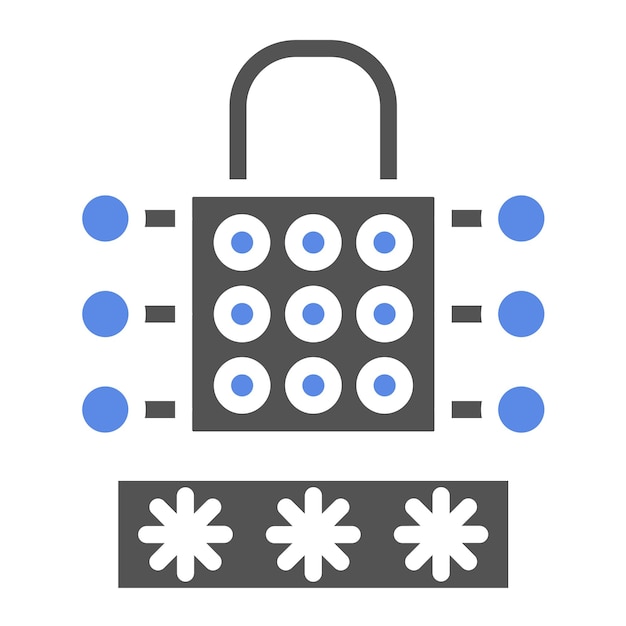Protect Your Finances: 5 Identity Theft Security Measures

Protecting your personal finances from identity theft requires implementing robust security measures, such as monitoring credit reports, using strong passwords, enabling two-factor authentication, being cautious of phishing attempts, and securing your personal documents.
Protecting your personal finances from identity theft: Implement these 5 security measures today is crucial in an age where digital threats are increasingly sophisticated. Taking proactive steps can save you from financial loss and emotional distress.
Understand the Rising Threat of Identity Theft
Identity theft is a pervasive and evolving threat that can have devastating consequences on your personal finances. Understanding its scope and methods is the first step in effective protection.
With the increasing reliance on digital platforms for financial transactions, identity theft has become more sophisticated. Thieves employ various tactics to steal personal information, making it imperative to stay informed and vigilant.
Common Methods Used by Identity Thieves
Identity thieves use a variety of methods to steal your personal information. These methods include:
- Phishing: Sending fraudulent emails or text messages disguised as legitimate communications to trick you into revealing sensitive data.
- Skimming: Illegally capturing credit or debit card information using a small device attached to card readers.
- Account Hacking: Gaining unauthorized access to your online accounts through weak passwords or security vulnerabilities.
- Data Breaches: Exploiting security weaknesses in large databases to steal personal information from numerous individuals.

The consequences of identity theft can be far-reaching, affecting not only your financial stability but also your credit score and overall peace of mind. It is essential to understand these risks to motivate proactive protection.
Staying ahead of identity thieves requires ongoing education and the implementation of robust security measures. By understanding the threats, you can better protect your personal finances and safeguard your identity.
Monitor Your Credit Reports Regularly
Regularly monitoring your credit reports is a fundamental step in detecting and addressing identity theft. Credit reports provide a detailed history of your credit activity, including new accounts, loans, and credit inquiries.
By reviewing your credit reports, you can identify any unauthorized or suspicious activity early on, allowing you to take immediate action to mitigate potential damage.
How to Access Your Credit Reports
You are entitled to a free credit report from each of the three major credit bureaus—Equifax, Experian, and TransUnion—once every 12 months. You can access these reports through:
- AnnualCreditReport.com: The official website to request free credit reports from all three bureaus.
- Credit Bureau Websites: Visiting the individual websites of Equifax, Experian, and TransUnion to request your reports.
- Credit Monitoring Services: Subscribing to credit monitoring services that provide ongoing updates and alerts regarding changes to your credit reports.
Whether you choose to review your credit reports yourself or opt for a credit monitoring service, the key is to make it a regular habit. Early detection of suspicious activity can significantly reduce the impact of identity theft on your personal finances.
Monitoring your credit reports is not just about identifying fraud; it is also about maintaining a healthy credit profile. Regular reviews can help you catch errors or inaccuracies that may be affecting your credit score.
Staying proactive with your credit reports is a simple yet powerful way to protect your financial identity and maintain control over your financial well-being.
Use Strong, Unique Passwords and a Password Manager
Using strong, unique passwords for all your online accounts is one of the most effective ways to secure your personal finances. Strong passwords are difficult to guess and provide a robust defense against hacking and unauthorized access.
However, managing multiple unique passwords can be challenging. This is where a password manager becomes an invaluable tool.
The Importance of Strong Passwords
Strong passwords should be:
- At least 12 characters long.
- A combination of uppercase and lowercase letters, numbers, and symbols.
- Unique to each account, avoiding reuse of passwords.
Weak passwords, such as common words or easily guessable phrases, are highly vulnerable to cyberattacks. By using strong, unique passwords, you significantly reduce the risk of your accounts being compromised.

How a Password Manager Can Help
A password manager is a software application that securely stores and manages your passwords, allowing you to:
- Generate strong, random passwords for each of your accounts.
- Store all your passwords in an encrypted vault, accessible with a master password or biometric authentication.
- Automatically fill in your passwords on websites and apps, saving you time and reducing the risk of keylogging.
By using a password manager, you can ensure that all your accounts are protected with strong, unique passwords without the burden of remembering them all.
A password manager not only enhances your security but also simplifies your online experience. It is a practical and effective solution for managing your passwords and protecting your personal finances.
Take control of your password security today. Embrace the use of strong, unique passwords and a reliable password manager for a safer online presence.
Enable Two-Factor Authentication Whenever Possible
Two-factor authentication (2FA) adds an extra layer of security to your online accounts by requiring a second form of verification in addition to your password. This makes it significantly harder for hackers to gain unauthorized access, even if they have your password.
By enabling 2FA on your financial accounts and other sensitive platforms, you can protect your personal finances from identity theft.
How Two-Factor Authentication Works
2FA typically works by:
- Requiring you to enter a code sent to your mobile device via SMS or generated by an authenticator app.
- Using biometric authentication, such as fingerprint or facial recognition, to verify your identity.
- Requesting a security key or hardware token to confirm your login.
Even if a hacker manages to obtain your password, they will still need access to your second factor of authentication to log in to your account. This additional security layer provides a robust defense against unauthorized access.
While 2FA may add a few extra seconds to your login process, the added security benefits far outweigh the minor inconvenience.
Implementing Two-Factor Authentication
To enable 2FA on your online accounts:
- Check the security settings of each of your accounts to see if 2FA is offered.
- Follow the instructions provided by the service to set up 2FA using your preferred method (SMS, authenticator app, or security key).
- Keep your recovery codes or backup methods in a safe place in case you lose access to your primary 2FA device.
By enabling 2FA whenever possible, you can take a significant step towards protecting your personal finances and securing your online identity.
In today’s digital world, security is paramount. Two-factor authentication is a simple yet powerful tool that can help you safeguard your sensitive information and prevent identity theft.
Be Cautious of Phishing Attempts and Scams
Phishing attempts and scams are among the most common methods used by identity thieves to steal personal information. By being cautious and aware, you can avoid falling victim to these deceptive practices.
Phishing involves fraudulent emails, text messages, or phone calls that appear to be from legitimate organizations, such as banks, credit card companies, or government agencies. These communications often try to trick you into providing sensitive information, such as passwords, account numbers, or social security numbers.
Identifying Phishing Attempts
To spot phishing attempts:
- Be wary of unsolicited emails or messages asking for personal information.
- Check the sender’s email address for inconsistencies or misspellings.
- Look for grammatical errors, typos, and unprofessional language in the message.
- Avoid clicking on links or downloading attachments from unknown senders.
If you receive a suspicious email or message, verify its authenticity by contacting the purported sender directly through a trusted channel, such as their official website or customer service hotline.
Do not provide any personal information unless you are absolutely certain that the request is legitimate.
Protecting Yourself from Scams
To protect yourself from scams:
- Be suspicious of offers that seem too good to be true.
- Never send money or personal information to someone you have only met online.
- Be cautious of requests to pay with gift cards, wire transfers, or cryptocurrency, as these methods are often used by scammers.
By staying vigilant and informed, you can avoid becoming a victim of phishing attempts and scams. Protecting your personal finances requires a proactive approach and a healthy dose of skepticism.
With diligence and awareness, you can safeguard your personal finances and maintain peace of mind in an increasingly complex digital landscape.
| Key Point | Brief Description |
|---|---|
| 🛡️ Monitor Credit Reports | Regularly check reports for unauthorized activity. |
| 🔑 Strong Passwords | Use unique and complex passwords for all accounts. |
| 📱 Two-Factor Authentication | Add an extra layer of security to your online accounts. |
| 🎣 Watch for Phishing | Be cautious and identify suspicious emails or messages. |
FAQ
▼
Immediately contact your bank and credit card companies to report the issue. File a police report and place a fraud alert on your credit reports with Equifax, Experian, and TransUnion.
▼
It’s a good practice to change your passwords every three to six months. However, if you receive a notification about a data breach, change your passwords immediately, especially for critical accounts.
▼
A credit freeze restricts access to your credit report, making it harder for identity thieves to open new accounts in your name. Use it if you know you’ve been a victim of identity theft or want enhanced security.
▼
Popular and highly-rated password managers include LastPass, 1Password, Dashlane, and Bitwarden. These apps offer secure storage, password generation, and automatic form filling across devices.
▼
Keep your Social Security number secure by not carrying your Social Security card, avoiding giving it out unnecessarily, and shredding documents that contain your number to minimize risk of exposure.
Conclusion
Protecting your personal finances from identity theft is an ongoing effort that requires vigilance and proactive measures. By implementing these five security strategies – monitoring your credit reports, using strong passwords, enabling two-factor authentication, being cautious of phishing attempts, and properly securing personal documents – you can significantly reduce your risk and safeguard your financial well-being.





